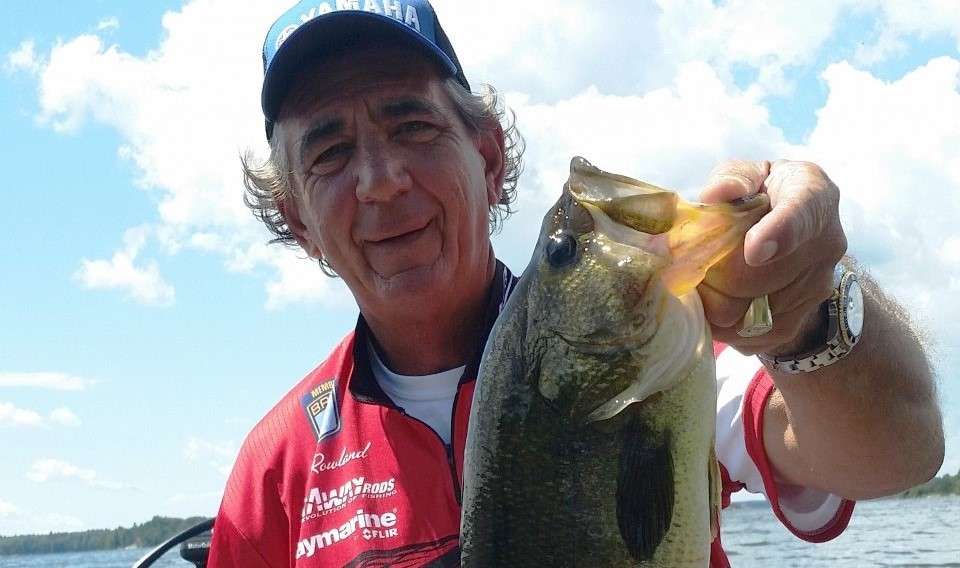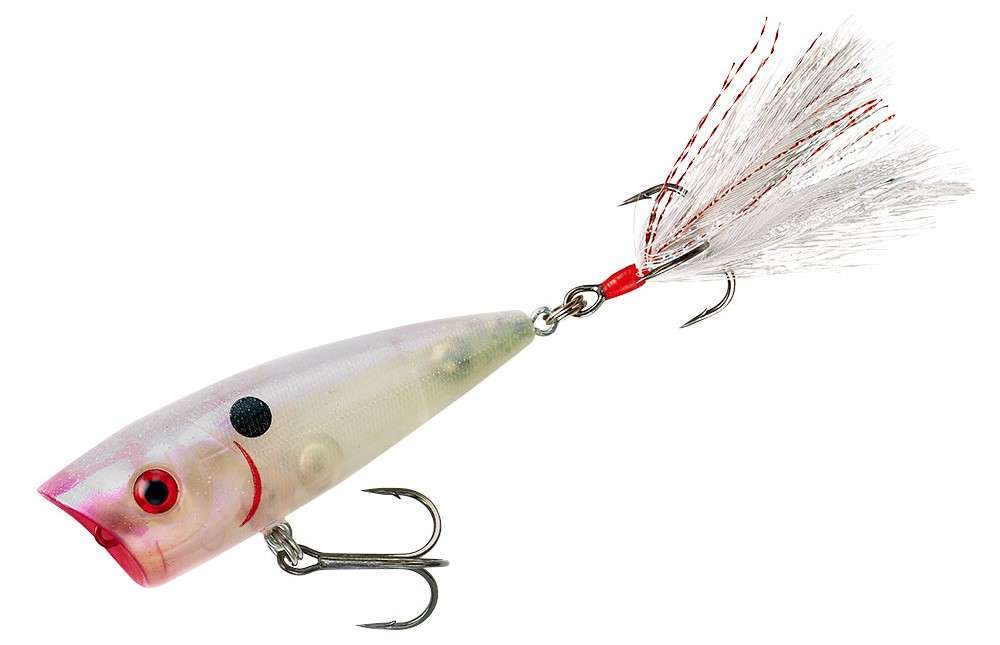
Part 2: Topwater Bait Types
In part 1 of this series, topwater legend Zell Rowland covered the right gear for topwater fishing. In part 2, he gets down to bait types, what he likes and when he likes them.
“There are really only about five types of topwater lures,” Rowland says. “There are (1) buzzbaits, (2) prop baits, (3) poppers and chuggers, (4) walking baits and (5) hollow-bodied rats and frogs. There are a few unique baits out there, too, like the old Arbogast Jitterbug or Heddon Crazy Crawler, that don’t seem to fit easily into one of those categories, but they’re really just a subcategory of something else. The Jitterbug and Crazy Crawler, for example, are really just variations of a buzzbait.”
Before we get into Rowland’s breakdown of the basic topwater types and how and when he uses them, you should know that he has no rigid formula for topwater lure selection.
“There’s just no way to know if a bass will want a buzzbait or a popper on any given day,” he says. “Most often you’re going to have to experiment to find the right bait type, the right size, the right color and the right retrieve.”
Here then are the basic topwater lure types and some of Rowland’s guidelines for using them.
Buzzbaits
“I love a buzzbait almost anytime the water is above 55 degrees or so,” Rowland says, “but I especially like them in the pre-spawn when the water temperature is below 57 degrees.”
Rowland’s favorite is the Booyah Buzz, and he usually opts for Snow White Shad or Black in 3/8-ounce.
“At that time of year I want a lot of noise, and a buzzbait delivers that. I’ll experiment between slow, medium and fast retrieves until I figure out what they want, but slower is often better and you can alter the blade on most buzzbaits to get them to run even slower by taking a pair of pliers and cupping the blades a little more. If you want the bait to run faster, do the opposite and bend the blades out.”
Prop baits
Once bass are on the beds, Rowland’s pick for his favorite topwater lure switches to a prop bait like the classic Smithwick Devil’s Horse. He acknowledges that other topwater styles could be even stronger on any given day, but opts for the prop bait for one very compelling reason.
“I can work it in one spot for a really long time,” he says. “Working it in place over a bedding area is often the ticket to aggravating a bass to strike, and the Devil’s Horse is perfect for that.”
Poppers and chuggers
Rowland owes much of his legend to the success he’s had with the Rebel Pop-R, a bait that had gone out of production until news of his catches went mainstream more than 20 years ago. He altered the original bait slightly by shaving down the underside of the concave face. These tweaks were later incorporated in the Xcalibur Zell Pop … now the Booyah Boss Pop.

“One of my favorite times to fish a popper is right after the bass spawn and when the shad start spawning,” Rowland says. “The 2- or 3-inch Boss Pop will match the hatch of the shad, and the noise you can get from the bait sounds like shad popping. It’s just right at that time of year.”
Walking baits
The topwater master is still fishing a popper once spring blends into summer, but his go-to topwater choice shifts to a walking lure like the ubiquitous Heddon Zara Spook.
“In summer, the water usually clears up,” Rowland says. “When you have a lot of visibility — sometimes 10 feet or more — I want a bait that creates a lot of disturbance and pulls bass from long distances. On really clear lakes like Mead in Nevada or Lanier in Georgia, bass will often come from 20 or 30 feet away or even from 20 or 30 feet deep to hit a Spook.”
Hollow-bodied rats and frogs
As summer progresses and the aquatic vegetation in lakes all around the country grows and starts to mat at the surface, topwater options may dwindle but topwater action can be strong.
This is when Rowland chooses a hollow-bodied rat or frog like the Booyah Pad Crasher or Poppin’ Pad Crasher.
“The bass under the mats are there for a reason. They have everything they need,” Rowland says, “and an easy meal on top is often just the thing to get them eating. It’s some of the most exciting fishing to be found anywhere and a great example of what makes topwater fishing so special.”
Mat fishing is one of the few topwater applications where Rowland will not be casting his signature series Zell Rowland Topwater Rod from Impulse Fishing Rods. Instead he uses a medium-heavy Impulse rod that’s 7 feet long with a parabolic action better suited to drive a heavy single or double hook home and keep the hook from tearing out.
In Part 3, Rowland covers advanced topwater techniques.





